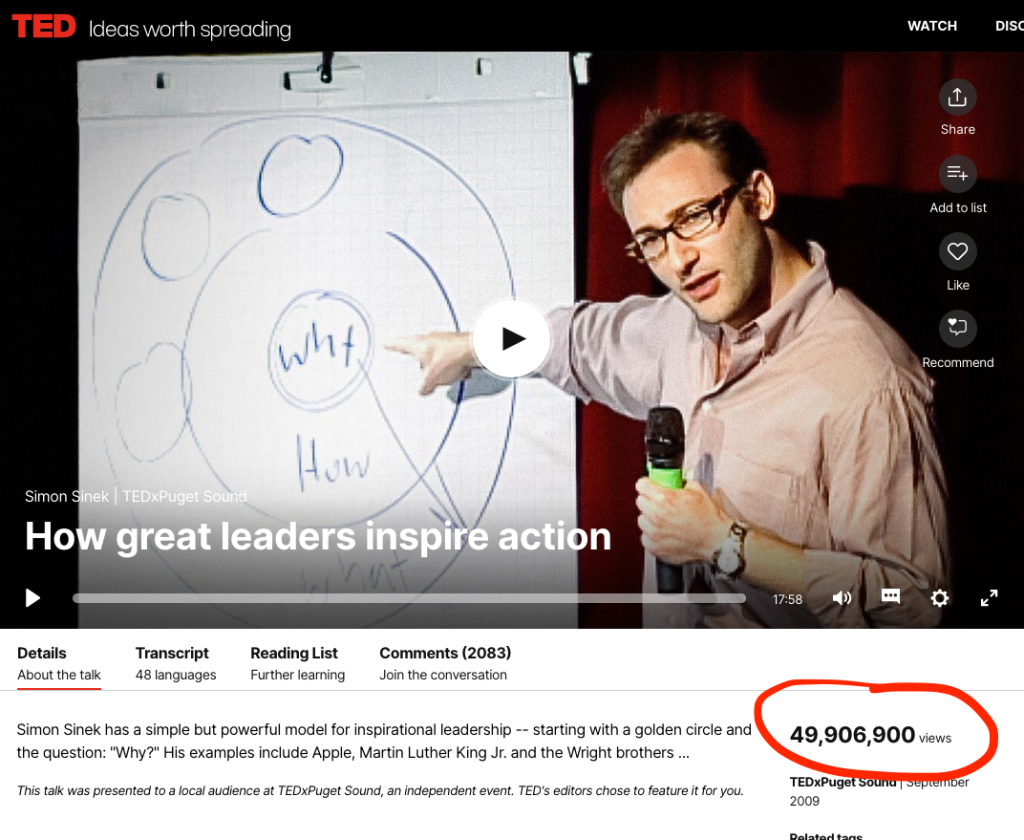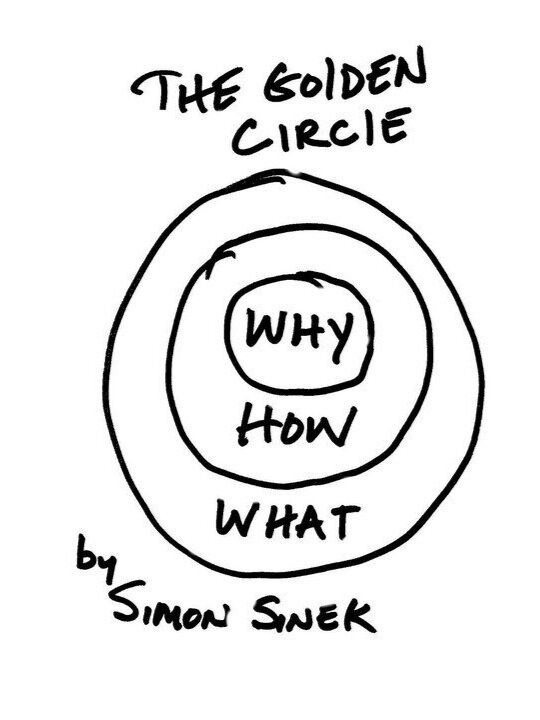Creating a breakthrough moment with your audience is tough.
Every business fights for attention to educate and differentiate. Be it an international mega-conglomerate or that “Mom-and-Pop” shop around the corner.
It’s a noisy environment.
Your prospects and customers are bombarded by thousands of narratives a day. In their professional and personal lives. Practically around the clock.
A 2019 estimate by Hootsuite CEO Ryan Holmes claims an average person in the U.S. is exposed to “upward of 5,000 ads per day.” That’s just ads! (UPDATE: According to a Red Crow Marketing article, it’s now as much as 10,000 ads per day!)
Now add a massive strain on your audience’s attention span. Say a global pandemic or economic recession.
The fight can feel like it’s no longer a fair one.
This is why you need to be crystal clear with your audience about “The Why”
Let’s explore how.
Why the Why (A statement, not a question)
You’re likely well aware of Simon Sinek’s concept of “Start With Why”.
Sinek’s books and 2009 TED Talk have been watched, read, quoted, misquoted, preached, etc. tens of millions of times.

At the time of writing this post, the number of views on TED.com is closing in on the big five-oh MILLION! (UPDATE: As of February 2023, views are over 61 million.)

Despite all this airplay, the golden rule—or circle in this case—at the heart of his seminal work is often lost in execution.
This can happen when crafting a narrative to communicate the value prop of your product or service.
Why?
Because the products and services we build are complex. This makes telling its story hard.
Even an early stage minimum viable product (MVP) can have lots of facets, nuances, and capabilities. Being succinct appears impossible; you are convinced every prospect has to learn about them all.
“How else are they going to understand how awesome it is!” you may have heard some say.
Here’s the reality: your prospects won’t care about any of these “killer features” if they don’t immediately get why it matters to them.
Author and godfather of the lean startup movement Eric Ries reflected on this in his book, “The Startup Way”:
”I can’t tell you how many times I’ve worked with teams…that literally don’t know what problem they are trying to solve from the customer’s point of view.”
This is not meant to downplay the importance nor the elegance of your solution.
It’s a crucial reminder. You jeopardize achieving a breakthrough moment if you don’t take a “customer’s point of view” in your narrative.
Five Whys for the win
Asking why turns out to be the most expedient way to gain this perspective (or, prevent yourself from forgetting to do so).
You just need to ask this question five times.

The Five Whys (or 5 Whys) is a technique first employed by Toyota as part of its renowned Toyota Production System. The TPS is not a marketing framework. It’s a management philosophy found within the “The Toyota Way”.
Not the first place you’d turn to when trying to craft a breakthrough marketing message.
That said, applying the principle of asking “five whys” is super helpful. The process gets you thinking. It helps you identify the meaningful benefit your product or service delivers.
How?
By pushing you to get past your product’s features and benefit. To understand the emotional and tangible reasons why this matters to your customer.
Take an example from one of my own experiences.
While at Microsoft, I was tasked to craft a compelling narrative for a new set of features about to be introduced into our Microsoft Exchange product line. We made a significant change to the high availability and disaster recovery capabilities.
On its surface, the feature was super beneficial. It mitigated the risk of email outages due to a failed disk or a server crash. Imagine the horror of no email!
Yet, it was just that. Surface level and not very differentiated in a world where everyone is touting resiliency of their product or service.
Knowing we needed to breakthrough, we kept asking “why?” to dig deeper into the benefits this provides our IT pro audience. We spoke to several customers and it went something like this:
- Why does this new HA/DR feature make things different:“It eliminates the need to run nightly backup jobs”
- Why is this a good thing?”Because I won’t get paged in the middle of the night or on weekends if a backup failed”
- Why does that matter?“I’ll be less stressed and can focus on higher-impact initiatives”
- Why is that a good thing?“If I can accomplish more, I’ll get promoted”
- Why is that important to you?”A raise means I can take my family on that vacation we wanted”
Who could’ve imagined that a tangible benefit would be family bliss!
Now, you might not want to take the answer to your last why question and say “that’s our marketing message!”
Instead, tease out the most meaningful benefit discovered in the exercise. Use that to anchor your narrative. In the case of Exchange Server, it was “Accomplish More”.
Like the example above, take one of your past efforts and try asking yourself the 5 whys. See if you would have ended up in a different place with your narrative and messaging.
Before you realize it, you’ll be a natural at getting right to the center of the golden circle. From there you’ll discover the golden nugget that will lead to your breakthrough moments.
And, you’ll know exactly why.


